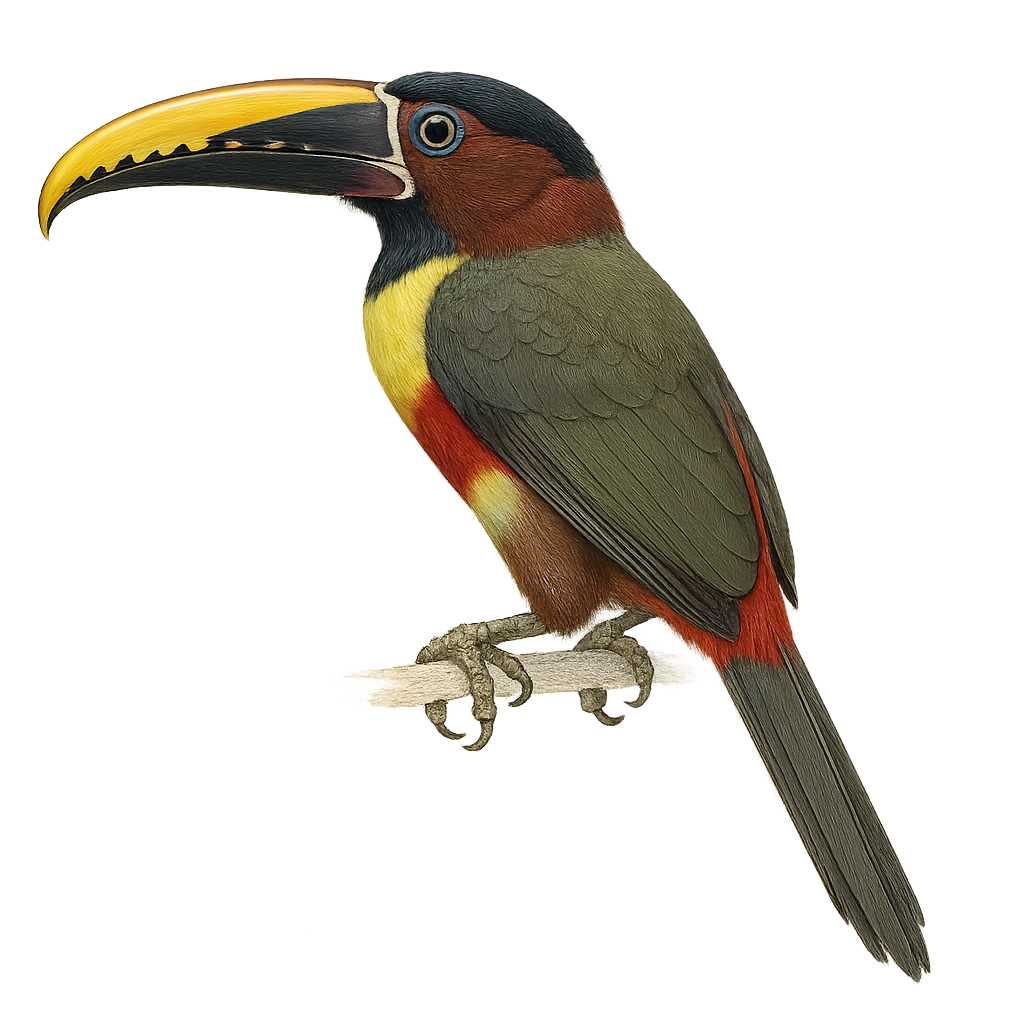Your wildlife photography guide.
Explore the chestnut-eared aracari in detail, study its behavior, prepare your shots.
Where to observe and photograph the chestnut-eared aracari in the wild
Learn where and when to spot the chestnut-eared aracari in the wild, how to identify the species based on distinctive features, and what natural environments it inhabits. The WildlifePhotographer app offers tailored photography tips that reflect the chestnut-eared aracari’s behavior, helping you capture better wildlife images. Explore the full species profile for key information including description, habitat, active periods, and approach techniques.
Chestnut-eared Aracari
Scientific name: Pteroglossus castanotis

IUCN Status: Least Concern
Family: RAMPHASTIDAE
Group: Birds
Sensitivity to human approach: Suspicious
Minimum approach distance: 10 m
Courtship display: October to December
Incubation: 15-17 jours
Hatchings: October to January
Habitat:
Tropical forests, humid forests, forest edges
Activity period :
Primarily active during the day, with peak activity in the morning and late afternoon.
Identification and description:
The Chestnut-eared Aracari is a colorful bird from the Ramphastidae family, known for its vibrant plumage and distinctive bill. It features bright colors with shades of green, yellow, and red, along with its characteristic chestnut-colored ear patches. This bird measures about 34 to 45 cm in length. It primarily inhabits the tropical rainforests of South America, notably in Brazil, Bolivia, Paraguay, and Argentina. The Chestnut-eared Aracari is a social bird, often seen in small groups. It mainly feeds on fruits, but also consumes insects and small vertebrates. Its presence is an indicator of the health of tropical forests, as it plays a crucial role in seed dispersal.
Recommended lens:
400mm – adjust based on distance, desired framing (portrait or habitat), and approach conditions.
Photography tips:
To photograph the Chestnut-eared Aracari, opt for a 400mm lens or longer to capture the details of its colorful plumage. Look for it in tropical forests, where it often perches on tree branches. Be patient and discreet, as this bird can be suspicious. Use a tripod to stabilize your camera and adjust ISO settings to compensate for low light under the canopy. Aim for morning or afternoon hours to take advantage of soft natural light.
The WildlifePhotographer App is coming soon!
Be the first to explore the best nature spots, track rutting seasons, log your observations, and observe more wildlife.
Already 1 432 wildlife lovers subscribed worldwide

